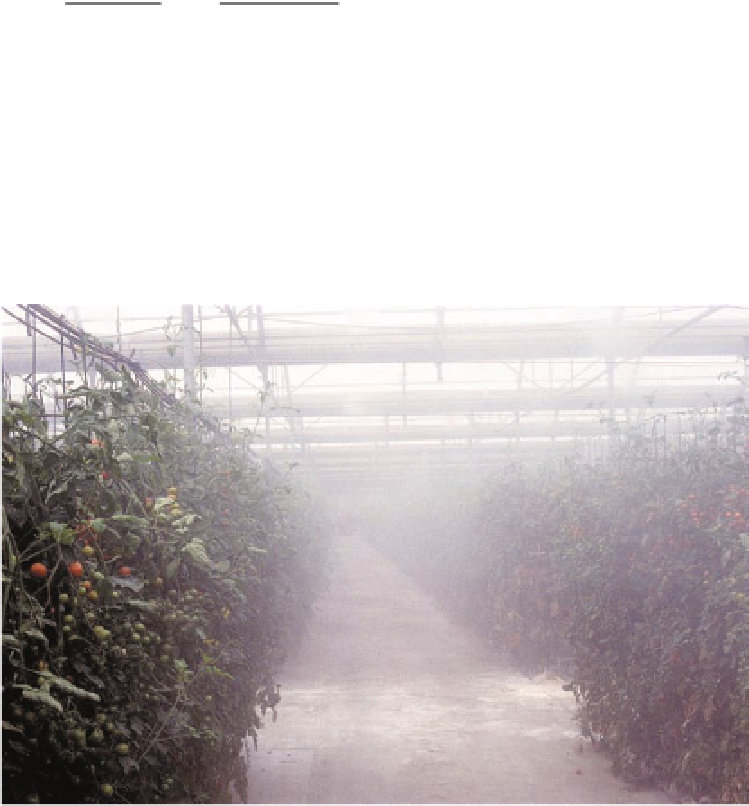Agriculture Reference
In-Depth Information
If there is no change of state (from
liquid to vapour) the heat required to
increase the temperature of water by 1°C
(specific heat of water) is relatively low,
4.2 kJ kg
−1
of water.
Transpiration is a specific form of evap-
oration that happens in plants. As the tran-
spiration consumes energy, it allows for the
cooling of the transpiring organs, and it is
the main mechanism by which the plants
decrease their temperature. Water fogging or
misting enables the greenhouse to be cooled
(Photo 5.1; see Chapter 8).
Convection with phase change
e v a p o r a t i o n
.
Water evaporation consumes a
lot of energy. Evaporation involves a change
of phase, from liquid to gas. The energy
required to make water pass from the liquid
state to the gas state is called the 'latent heat
of vaporization', and for water it is 2445 kJ
kg
−1
, at 20°C. The partial water vapour pres-
sure rises, and so does its energy content,
that is, its enthalpy increases. Evaporation
is only possible when the water vapour
pressure is lower than the saturation vapour
pressure at a given temperature.
c o n d e n s a t i o n
.
Condensation is the inverse
phenomenon to evaporation. Water passes
from the gaseous state (water vapour) to the
liquid state, releasing energy. It involves a
decrease of the partial pressure of the water
vapour in the air, and an increase in the
temperature of the surfaces where water
condenses.
Condensation happens only when the
air water vapour partial pressure reaches or
exceeds the saturation vapour pressure
point at a given temperature. The dew point
is the temperature below which condensa-
tion takes place.
From the phytosanitary point of view,
condensation is of great importance as the
S
S
DIREC.
T
2
T
1
d
Fig. 5.1.
Heat transfer by conduction between two
plane, parallel surfaces in a direction perpendicular
to both surfaces (DIReC) (see text).
Photo 5.1.
Water fogging or misting and proper ventilation enable the greenhouse to be cooled.






